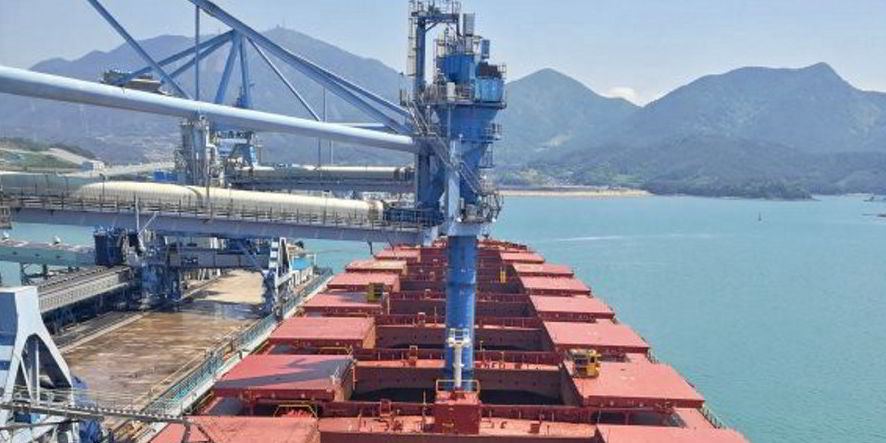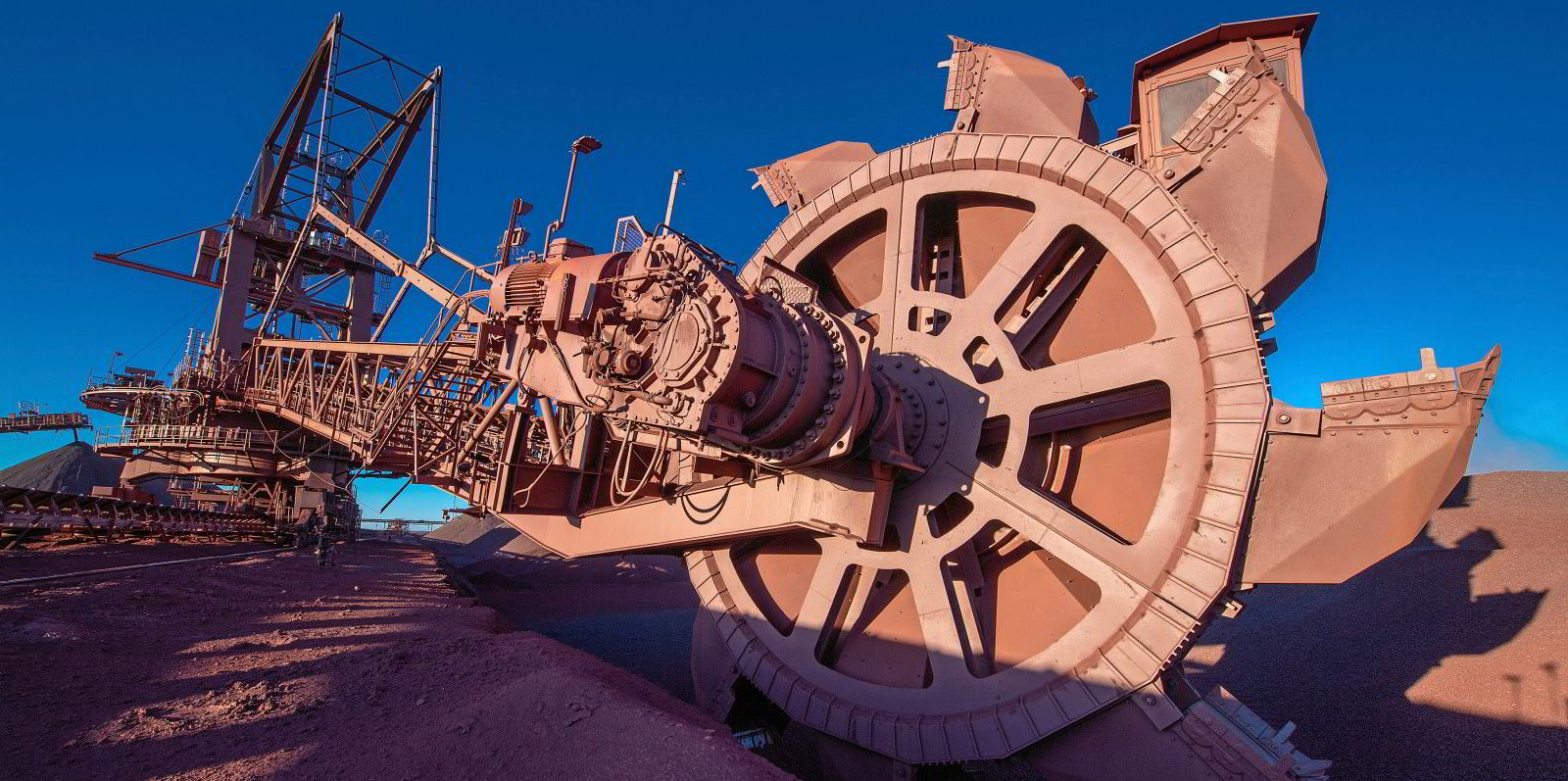Commodity prices for iron ore and steel have taken a huge leap and capesize rates have hit 15-year highs, but the relationship between the two phenomena remains complex.
May contracts for 62% Fe content iron ore (CFR China) traded as high as $222 per tonne on Monday, 30% above a month ago, according to figures cited by Braemar ACM Shipbroking.
In Singapore, Singapore Exchange (SGX) June iron ore contracts reached $225 per tonne on Monday, a $40 higher from Friday after an off-market trade on Sunday at $229 per tonne, according to Singapore-based research firm Navigate Commodities.
But it would be wrong link this jump in iron-ore pricing to supply-demand fundamentals, according to Navigate.
"At present, market participants are trading iron-ore derivatives like a cryptocurrency. Not based on fundamentals, just pure momentum and sentiment," the firm said in a note to clients on Monday.
Navigate expects the bull run in iron ore prices to be undermined by higher volumes of the commodity arriving into China from Australia.
It said it expects "speculatively overinflated prices to come off almost as fast as they went up once common sense prevails".
Analysts from Arrow Shipbroking Group, meanwhile, think the iron-ore price jump has by driven by demand from Chinese steel manufacturers.
The wild rally in the ferrous metals complex has prompted major commodity exchanges in China to take steps to cool the market.
China's Dalian Commodity Exchange on Monday said it will raise trading limits and margins for some iron ore contracts and has also reinstated fees on steel futures.
Separately, the Shanghai Futures Exchange said that from Tuesday it will set new fees for closing positions on the most active contracts for its steel rebar and hot-rolled steel coil futures for October deliveries.
"Ascending steel prices have gifted steelmakers with fantastic margins encouraging additional production, whilst environmental restrictions have had little material impact on output," the broker's research team told TradeWinds.
Hot-rolled coil and rebar prices have reached record highs due to supply concerns, while demand for these commodities is growing worldwide.
But China announced on Friday that it intends to enforce steel capacity replacement programmes more stringently from 1 June to curb pollution.
This has "fuelled speculation that steelmakers may front-load iron ore purchases before the new curbs kick in," derivatives broker Freight Investor Services said on Monday.
"The swathe of production curbs imposed have so far failed to rein in supply but boosted prices and profitability at mills, allowing them to better accommodate higher iron ore costs and potentially front-load production ahead of more environmental curbs," FIS said.
Inefficiencies
But commodity prices are just a sideshow. Inefficiencies in the capesize market are behind the current strength in freight rates, according to Russell Thompson, managing director of maritime trade data firm Tradeviews.
"Rising iron ore prices have made the shipping part of trading more affordable and therefore has led to inefficiencies in operations," Thompson told TradeWinds.
These "inefficiencies" are various in nature but combined are soaking up vessel supply because more capesizes are waiting for longer periods, he said.
"It's most likely increased waiting time to load cargo but could also extend to vessel maintenance. For example, there could be a backlog of unresolved vessel issues that could not be addressed during the peak of the Covid crisis," he added.
Congestion data compiled by bulker tracking platform Oceanbolt confirms that queues are increasing at major load ports for iron ore and coal, and to a lesser extent at discharge ports for the commodities in the Far East

Bulker and commodity markets alike are watching for more news on whether China will ban imports of Australian iron ore, like it has for imports of Antipodean coal.
Last Thursday, China announced an "indefinite" suspension to the China-Australia Strategic Economic Dialogue, a forum that last convened in 2017.
A ban on Australian iron ore is said to be the so-called nuclear option that both sides would rather avoid.
Nick Ristic, an analyst at Braemar ACM Shipbroking, thinks a new ban is unlikely because of China's reliance on Aussie ore.
"However, this has reportedly not stopped speculators in China from piling into the futures market following the holiday period last week, prompting the Dalian Commodity Exchange to introduce increased trading limits and margins for some contracts from [Tuesday]," he said.
"The heightened geopolitical risk may also have prompted buyers to restock key brands of iron ore as a precautionary measure."
The number of "congested" capesize vessels identified by the platform classed has leapt up by 33 since Sunday and stood at 407 ships on Tuesday.
Over the same period, capesizes' average waiting time has increased to 9.3 days from 8.6 days.
Iron ore volumes
Much has been made of China's seemingly endless appetite for iron ore, but customs data shows that its monthly imports during the first quarter of 2021 were up year on year by just 8%.
Volumes from Australia, China's main iron ore supplier, were 7% below the level seen during the first quarter of 2020, according to data compiled by Tradeviews.
"Yet strangely the Baltic Capesize Index has been trading higher for this period," Thompson observed.
The spot rate on the Baltic Exchange's Australia-to-China benchmark route has grown by 78% this year to date and reached $14.795 per tonne on Tuesday, down from an eight-year high of $15.35 per tonne last week.
"While capesize freight rates have soared in May, I don't expect [iron ore] volumes to be overly impressive and perhaps similar to the average of last year on this route," Thompson said.
"This is mainly due to the inefficiencies and returning steel demand in the rest of the world."




